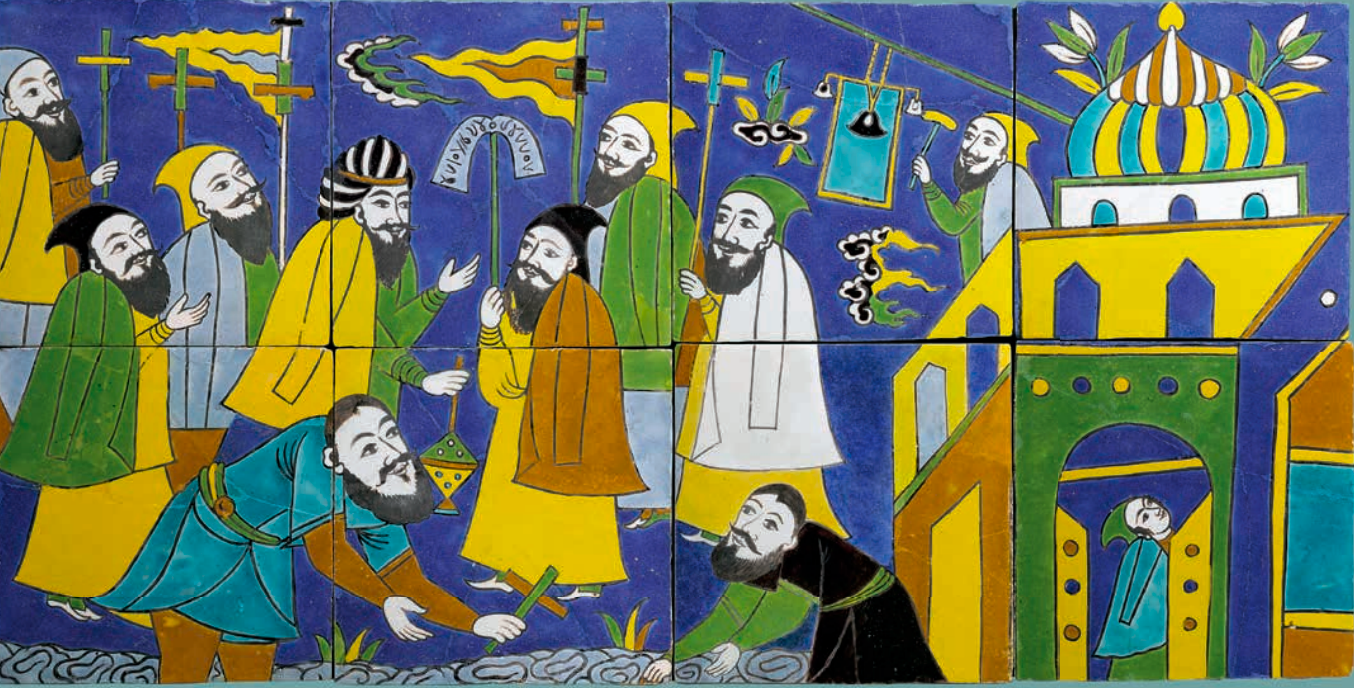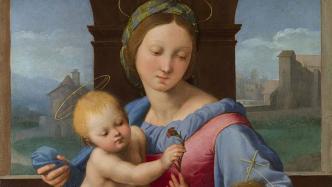
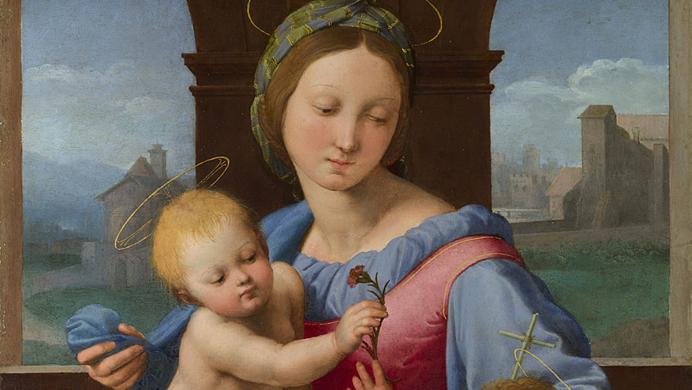
Surrounding the exhibition hall, the traditional European classic arches, plaster lines, light and shadow, and the Morandi color background wall with alternating shades are easily reminiscent of the beautiful and classical architectural space of the National Gallery of England. "The Paper Art Review" saw at the scene, from the beginning of the first work Antonello da Messina's "Saint Jerome in the Study" and Bellini's "Madonna and Child", following the "Guide", you can enjoy Renaissance art, Baroque art, Impressionism and Post-Impressionism, and British Romantic art along the way. And some well-known art history masterpieces such as Raphael, Caravaggio, Monet and Van Gogh are dotted like dazzling pearls.

exhibition site
This exhibition is the second exhibition of the Shanghai Museum's "Dialogue with the World" series of cultural relics and art exhibitions, and it is also the first cooperation with the National Gallery of England. As a world-class national gallery, the British National Gallery has a history of nearly two hundred years and ranks among the top ten most popular art museums in the world. Dr. Gabriel Fernaldi, director of the British National Gallery, said in his opening speech that the exhibition will tour around Asia, with the first stop being the Shanghai Museum. This is also the first time that the British National Gallery has held in mainland China exhibition. He is very pleased that the Museum's collection can reach new audiences through this traveling exhibition. "Walking through the National Gallery of England is like opening a history of European painting spanning from the 13th century to the early 20th century. This exhibition and catalog are designed to allow the audience to experience the condensed artistic journey."
"Under the current international environment, it is the original intention of the Shanghai Museum to invest a lot of energy and financial resources to facilitate the cooperation of this exhibition, and it is also our goal to allow Chinese audiences to enjoy this once-in-a-lifetime art feast at their doorstep without flying across the ocean. On the occasion of the Shanghai Museum’s 70th anniversary, the dedication of this important exhibition is the most sincere tribute to Shanghai Museum’s adherence to the forefront of international cultural and art exchanges in the past 70 years.” said Chu Xiaobo, director of the Shanghai Museum.

Botticelli's work "The Three Miracles of Saint Genobius"
The exhibition is divided into "Botticelli and Italian Painting in the 15th Century", "Raphael and the Italian High Renaissance", "Gosset and the Northern Renaissance", "Caravaggio and Baroque Painting in Italy and Spain", "Rembrandt and the 17th Century" Century Nordic Paintings", "Canaletto and 18th Century European Paintings", "Van Gogh and Impressionist Paintings", "Turner and British Paintings", in the form of a textbook, through the selection of 52 exhibits from 50 art masters. Presents the history of European painting from the Renaissance to Post-Impressionism in the 19th century.
Surrounding the exhibition hall, the traditional European classic arches, plaster lines, light and shadow, and the Morandi color background wall with alternating shades are easily reminiscent of the beautiful and classical architectural space of the National Gallery of England.

exhibition site
The movement of this exhibition is basically in chronological order, starting with the first work Antonello da Messina's "Saint Jerome in the Study" and Bellini's "Madonna and Child", following the " "Guide", you can enjoy Renaissance art, Baroque art, Impressionism and Post-Impressionism, and British Romantic art along the way. And such as Botticelli's "Three Miracles of Saint Genobius", Raphael's "Madonna of Gava", Caravaggio's "Boy Bitten by a Lizard", Monet's huge "Iris" , Van Gogh's "Butterfly in the Long Grass" and other well-known art history masterpieces are dotted like dazzling pearls.
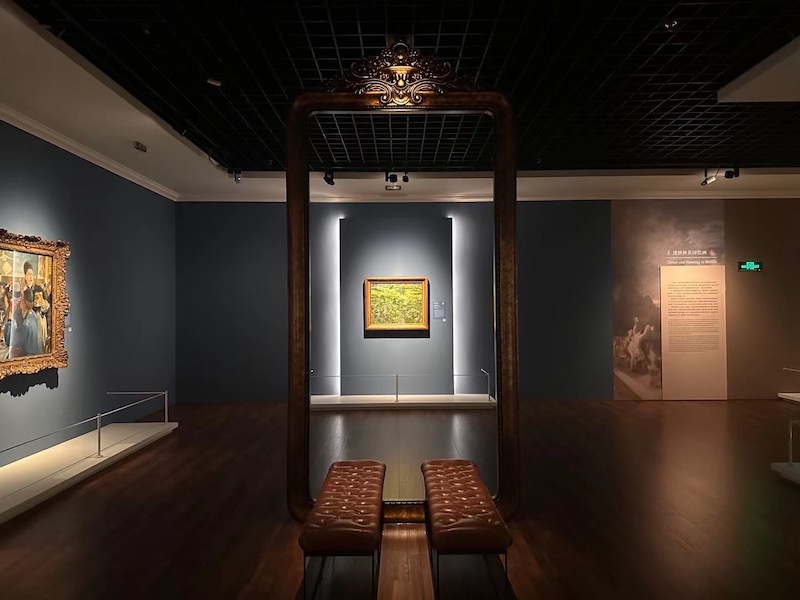
exhibition site
Wandering to the seventh section - "Van Gogh and Impressionist Paintings", the curatorial team arranged leather benches in the center of the exhibition hall. The audience sat on the benches and was impressed by Impressionist and post-impressionist masterpieces such as Manet's "A Corner of the Cafe Concert", Monet's "Iris", Renoir's "The Bather", Gauguin's "Computer Plate and Beer Glass in Front of the Window", etc. Surrounded, and the "C position" opposite is Van Gogh's "Long Grass and Butterfly". The audience can take a rest here, or savor the impressionist paintings here.
renaissance art
According to Chu Xin, Deputy Director of the Exhibition Department of the Shanghai Museum, the first three sections of the exhibition are all about Renaissance art, from Florence, Italy to Venice, and then to the Dutch Low Countries.
"Botticelli and 15th-Century Italian Painting" showcases two distinct schools during the heyday of 15th-century Italian painting. In the Venetian school of painting represented by Giovanni Bellini, the artists advocated naturalism and made good use of colors; while the Florentine painters paid more attention to lines and structures. Botticelli, who was hailed as the best at that time, appeared painter. In this section, the audience can see Messina's "Saint Jerome in the Study", Bellini's "Madonna and Child" and Botticelli's "The Three Miracles of Saint Zenobius" and other masterpieces for close observation The differences and characteristics of different genres of paintings at that time.
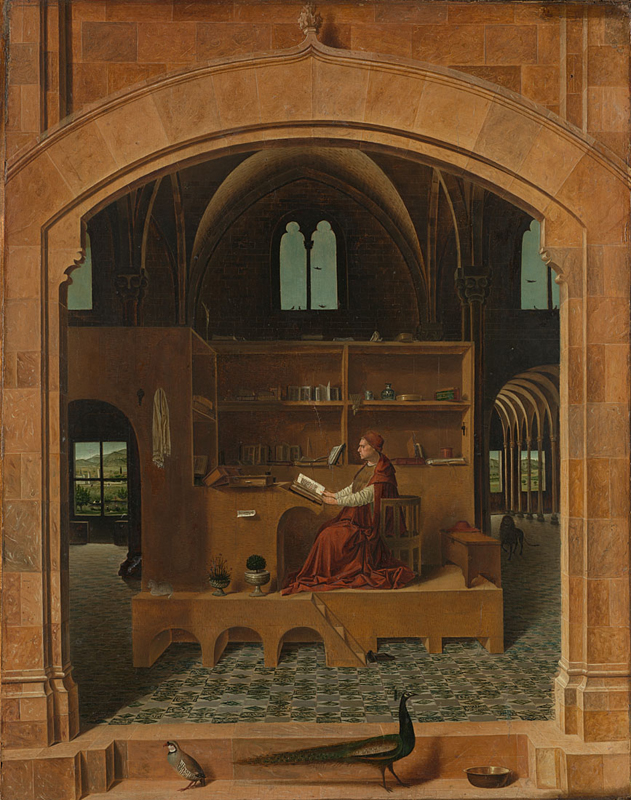
Messina's Saint Jerome in his Study
The first work of the exhibition "Saint Jerome in the Study" comes from the early Renaissance master Antonello da Messina. Saint Jerome (about 342/347-420) was born in the fourth century AD. of a saint. In order to avoid the temptation of the world, he left Rome and went to the desert of Bethlehem, where he made friends with lions, established a monastery, and translated the "Bible" from Greek into popular Latin (that is, "Vulgate Translation"). It is still used by the Catholic Church today. Because of this, he is always portrayed as a cardinal. The painter depicted a peaceful and bright Gothic church space with a soaring dome, slender columns and arches, and colorful floor tiles. The saint's lion companion strolls through the corridors, and the window overlooks the sun-drenched pastoral landscape. The peacock, partridge and copper bowl filled with water on the steps symbolize eternity, truth and purity respectively. Saint Jerome is sitting quietly reading in his study. The painter's superb skill in depicting rough or shiny, cold or warm textures is reminiscent of Jan van Eyck's "The Arnolfini Couple". This work was mistaken for Jan van Eyck at the time.
In the section "Raphael and the Italian High Renaissance", viewers can see religious art, portraits, historical and mythological paintings by great Renaissance artists, such as Raphael's "Madonna and Child with Baptism St. John the Author, Titian's "Portrait of a Woman", Correggio's "Venus, Mercury and Cupid", etc., from which to feel the "sacred power and rebirth" of classicism in the painter's works.

Raphael's Madonna and Child with St John the Baptist
Raphael's "Madonna and Child with St. John the Baptist" depicts the Virgin, the Infant Christ and St. John. In the picture, the Virgin Mary's upper body is twisted, her legs are crossed and she is sitting in a complicated posture. The infant Christ sits on her lap, looking down at his cousin St John the Baptist, who holds a cross of reeds. Jesus is passing a carnation. In religious paintings carnations symbolize divine love and the future crucifixion and resurrection of Christ. The Virgin seemed lost in thought, trying to embrace Christ with her blue cloak, while with the other hand she caressed the fur-clad St. John. The psychological interaction between the three icons is complex and moving. Raphael tried to present an absolutely harmonious visual effect through geometric structure diagrams, so that these icons are perfectly combined with the background, creating a deep sense of tranquility, and at the same time inspiring the audience to find inner resonance in appreciation and harmony.

Gossett "The Young Princess (Dorothea of Denmark)"
Artists in northern Europe were more interested in a variety of religious and secular subjects, usually focusing on depicting materials and details, presenting lifelike characters and scenes. In the "Gossett and Northern Renaissance" section, Gossett's "Young Princess", Altdorf's "Scenery on the Footbridge" and Buclere's "Four Elements: Water and Fire" are exhibited. Viewers can learn from these works Experience the characteristics of early Dutch painting in fine and free strokes.

Bukeleer's The Four Elements: Fire
baroque art
The fourth and fifth sections of the exhibition display Baroque art, focusing on Italian and Spanish Baroque paintings represented by Caravaggio, and northern European Baroque art represented by Rembrandt and Van Dyck.
The paintings of the Baroque period are characterized by dynamic composition, vivid colors and strong emotional expression. The Italian painter Caravaggio advocated a new and radical style. He used strong brushstrokes and was good at using dramatic light to give the characters a strong sense of presence. In Caravaggio's "Boy Bitten by a Lizard", Caravaggio successfully captured the momentary expression and movements of the boy after being suddenly bitten by a lizard, which is so vivid that the audience can directly feel the boy's pain and amazement, and transforming it into a living story, was an innovation in Caravaggio's art that had a lasting influence on European artists.
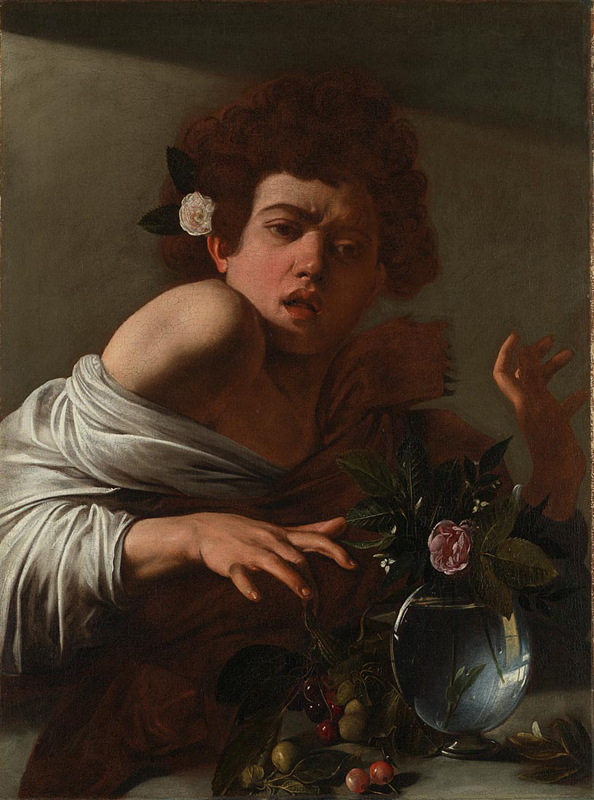
Caravaggio "Boy Bitten by a Lizard"
Rembrandt and Van Dyck were the preeminent painters of northern Europe in the 17th century. Van Dyck was good at depicting the bright colors and luxurious textures of aristocratic clothing; while Rembrandt explored the infinite possibilities of paint, using rich layers of light and shadow to outline the rich facial expressions of the characters. The works of the two art giants are listed opposite each other in the exhibition hall "Self-portrait at the age of 63" and "Lord John Stuart and his brother Bernard Stuart". The two completely different artistic styles can be seen from It can be seen in these two works.
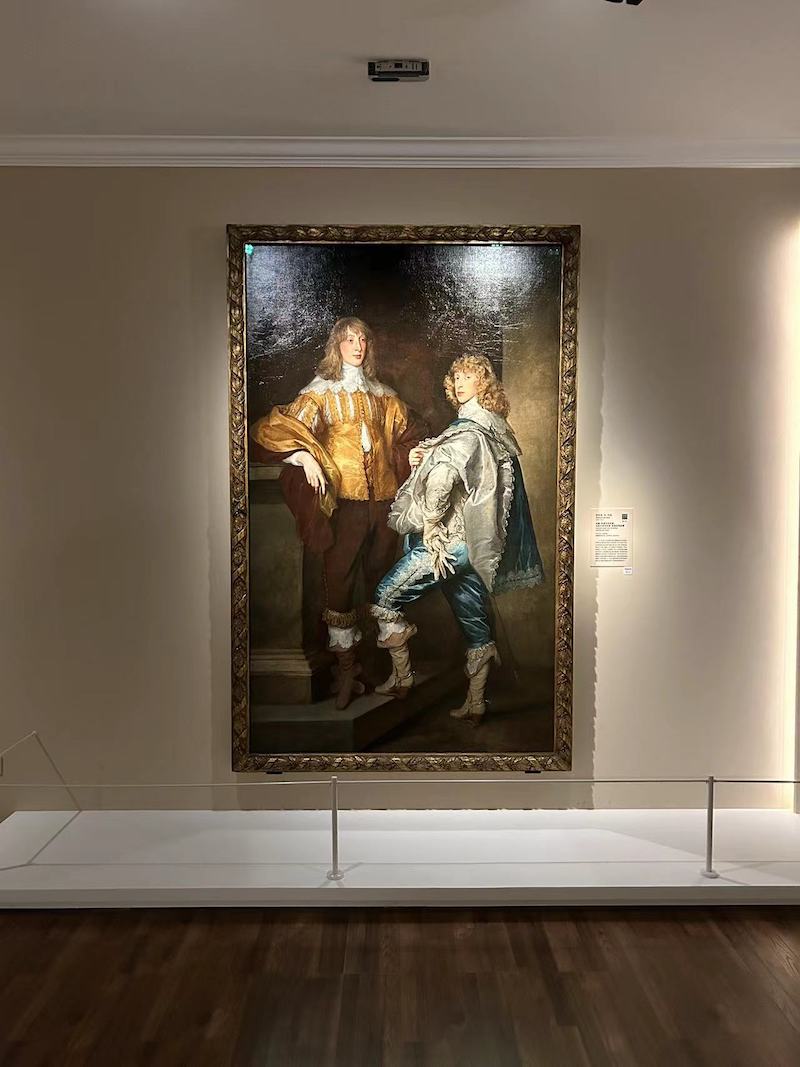
Exhibition view, Van Dyck "Sir Stuart and Brothers"
Rembrandt's Self-Portrait at 63 is one of three self-portraits painted in the months before his death in 1669. In this dying self-portrait, Rembrandt focuses on the color and texture of his aging face, layering thick and dense layers of paint to reveal his mottled skin, sunken eyebrows and thinning hair around his lips . At the time of painting this self-portrait, he was going through serious financial trouble and had filed for bankruptcy. People often think that Rembrandt's self-portrait in his later years is a portrayal of self-examination, but it may be the possibility of the artist constantly experimenting with different painting techniques to explore the portrait creation of many patrons of his age.
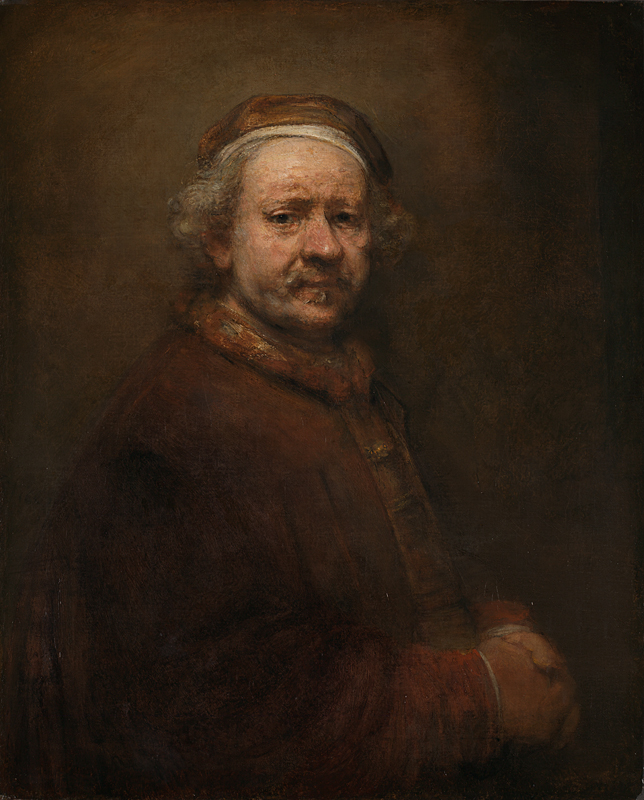
Rembrandt "Self-Portrait at 63"
impressionist painting
Impressionism refers to a loose group of artists active in Paris at the end of the 19th century. The term "Impressionists," originally pejorative, first appeared in an 1874 exhibition to describe the work of this group. The main representatives of Impressionism are Manet, Cézanne, Renoir and Monet, etc. They usually use bright colors in their creations, emphasize the effect of light and shadow changes, and often pay attention to non-traditional themes in modern life. During the advent of photography, their mode of painting resembled a "snapshot" taken by a camera. Impressionist painters usually painted outdoors, directly facing the subject to create, recording the immediate and natural feeling of the surrounding environment.
The seventh section "Van Gogh and Impressionist Paintings" exhibited Manet's "A Corner of the Cafe Concert", Cézanne's "Stove in the Studio", Renoir's "The Bather", and Monet's "Iris" "Long Grass and Butterflies" by Vincent van Gogh.
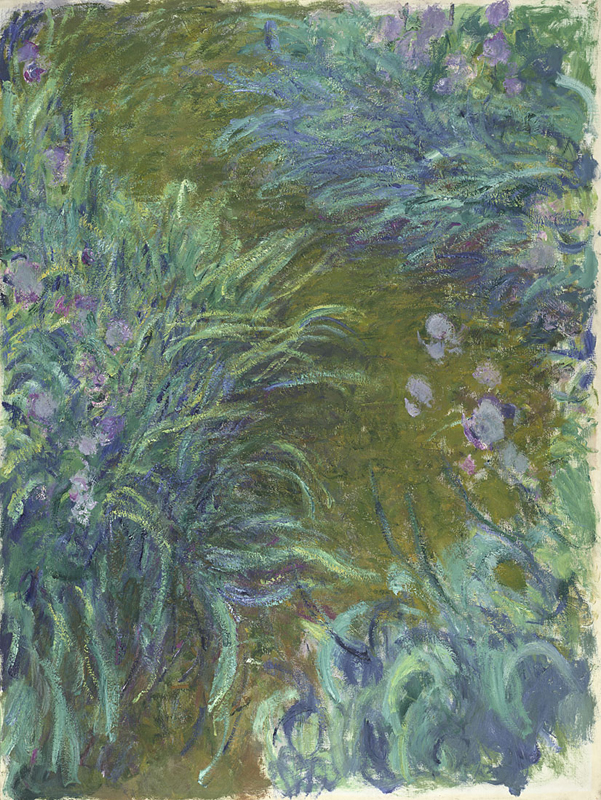
Monet's "Irises"
During his late period Monet retired to Giverny in northern France, where he built a large studio and cultivated water gardens with more than 200 species of irises, which became the inspiration for some of the painter's late expressive large-scale paintings , Monet's "Iris" was created in that period.
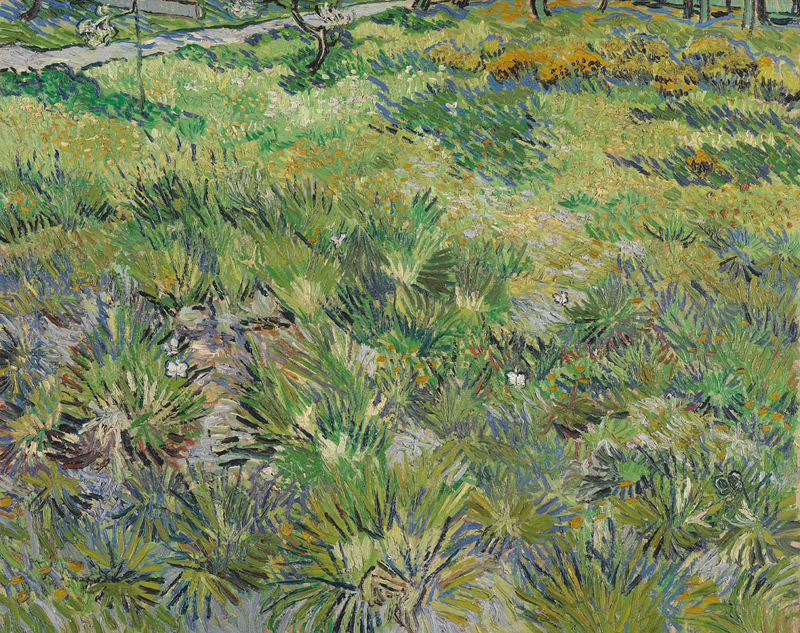
Vincent van Gogh "Long Grass and Butterflies"
"Long Grass and Butterflies" is one of the few works of Van Gogh in the collection of the British National Gallery. It depicts the last stage of his short life. When he was recuperating in a mental hospital in southern France, he saw a piece of grass in the courtyard. Van Gogh called it an "abandoned garden" where "the grass grows tall and unkempt, mixed with weeds of all kinds". This deserted garden became the subject of his last artistic creation. In the last few weeks of his life, Van Gogh burst out with an unimaginable creative impulse, and this work is the last light of his artistic life. The thick and colorful brushstrokes are superimposed on each other in different directions, presenting a colorful and lifelike dynamic, with great expressive force and emotional tension.
British Romantic art
The last part of the exhibition, "Turner and British Painting", shows the native British art, including Romantic painters represented by Turner, Constable, and famous British portrait painters Gainsborough and Thomas Lawrence. Huge portraits. Gainsborough's "Dr. Ralph Schomberg" and Lawrence's "Portrait of Charles William Lambton (Boy in Red)" are exhibited in this section; In Trafford Mill, you can appreciate the British landscape and unique artistic techniques described by him.
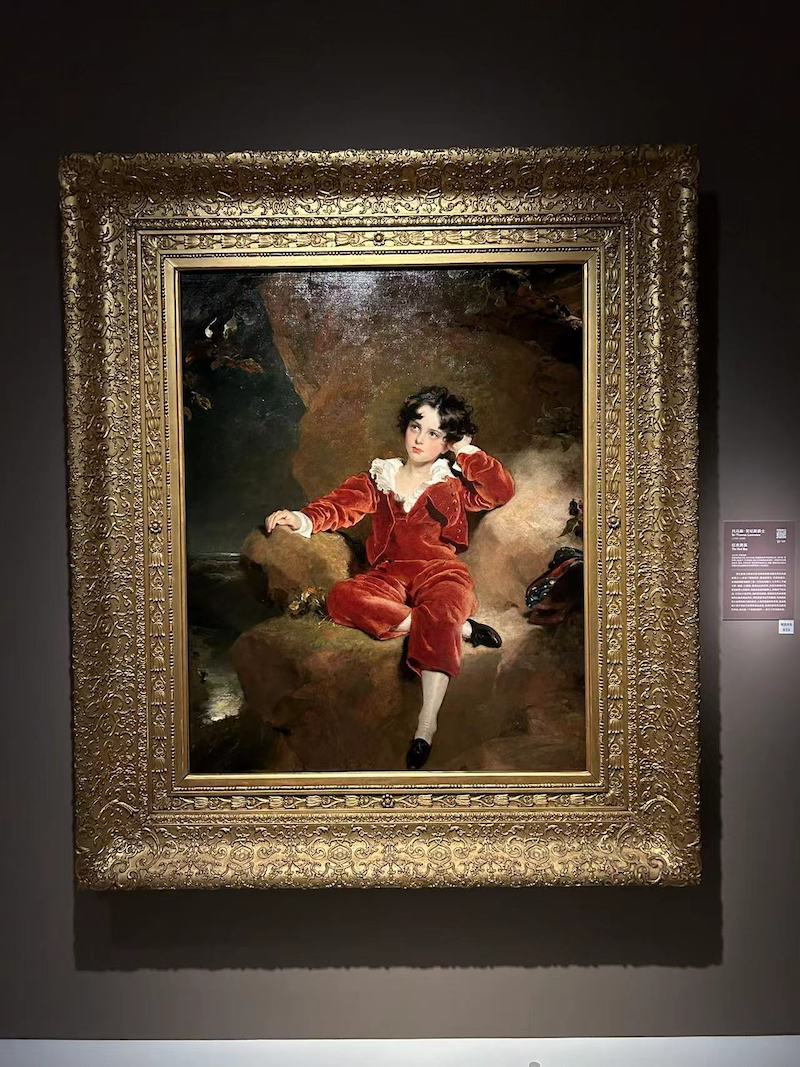
Exhibition view, Sir Lawrence's "Portrait of William Lambton (Boy in Red)"
Often drawing on past art forms, Constable developed a highly innovative approach to landscape painting. Determined to capture the beauty of his homeland with his brush before industrialization changed the Suffolk countryside forever, he painted many familiar scenes from his childhood, creating monumental naturalistic oil paintings. Turner, by contrast, was fascinated by the process of modernization, incorporating new technological elements such as steam trains and tugboats into his landscapes and seascapes, and successfully incorporating these modern themes into an Art Nouveau style rooted in tradition. Turner was familiar with marine paintings in the Dutch Golden Age, and admired the 17th-century French painter Claude, making his landscape paintings full of poetic effects dominated by light, atmosphere and weather.
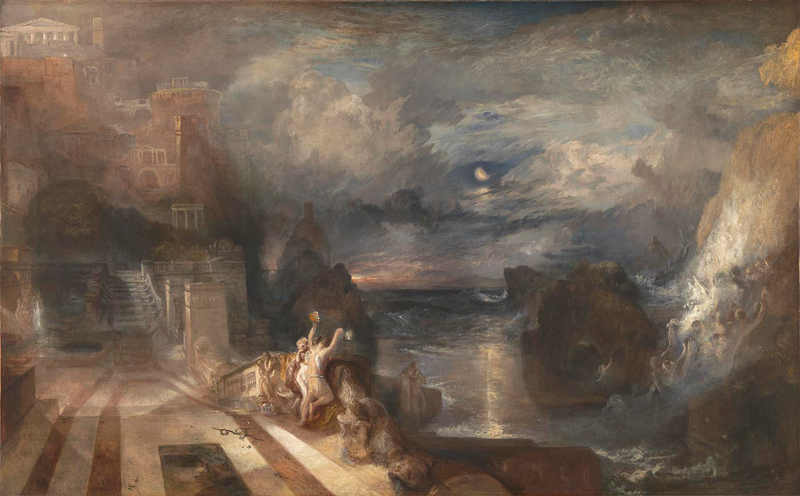
Turner's "The Parting of Hero and Leander"
The theme of Turner's "The Parting of Hero and Leander" comes from the famous love story in ancient Greece. Turner's work shows a deep understanding of Dutch Golden Age marine painting, and can also be seen to strongly admire Claude. Turner's landscape paintings are full of poetic atmosphere enhanced by light and shadow effects.
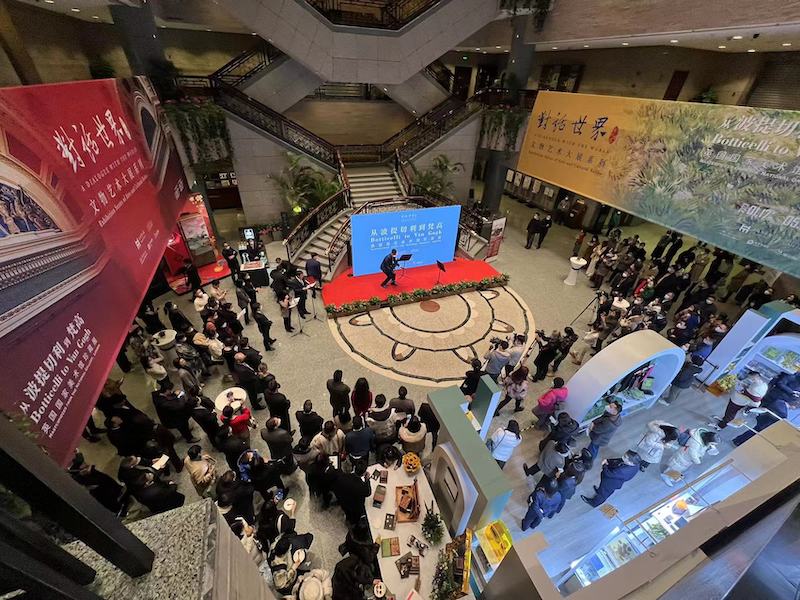
opening scene
"From Botticelli to Van Gogh: Collections from the National Gallery" is on view until 7 May 2023.
